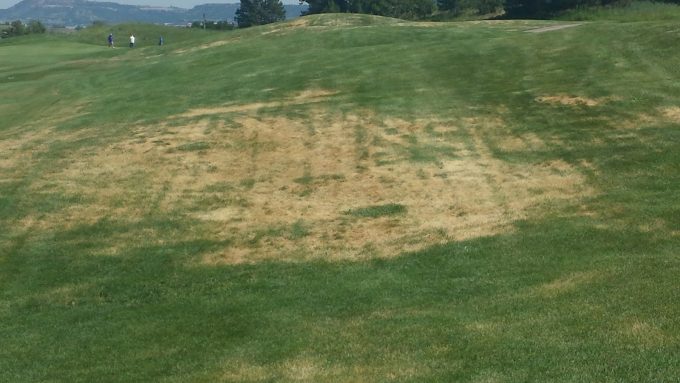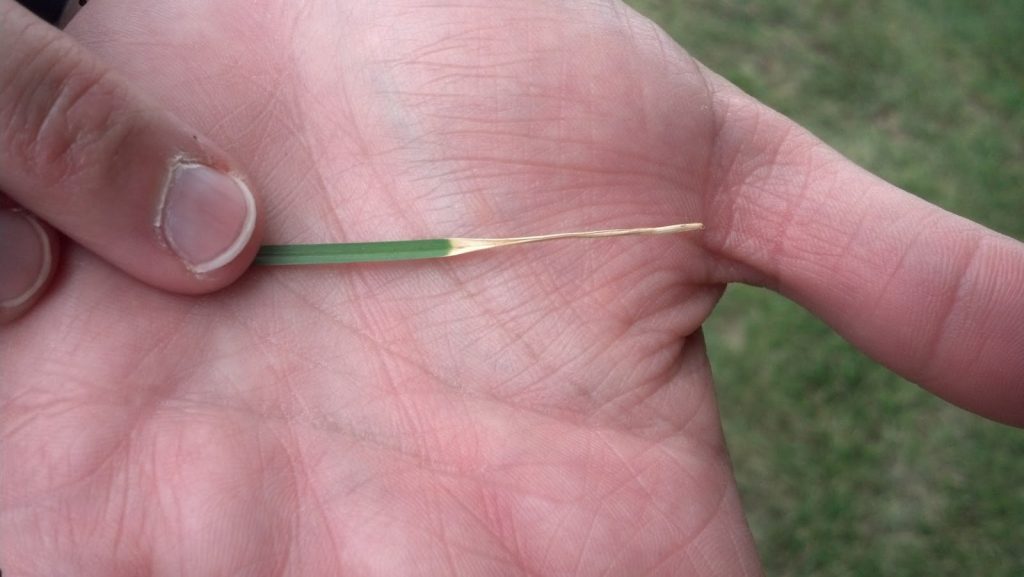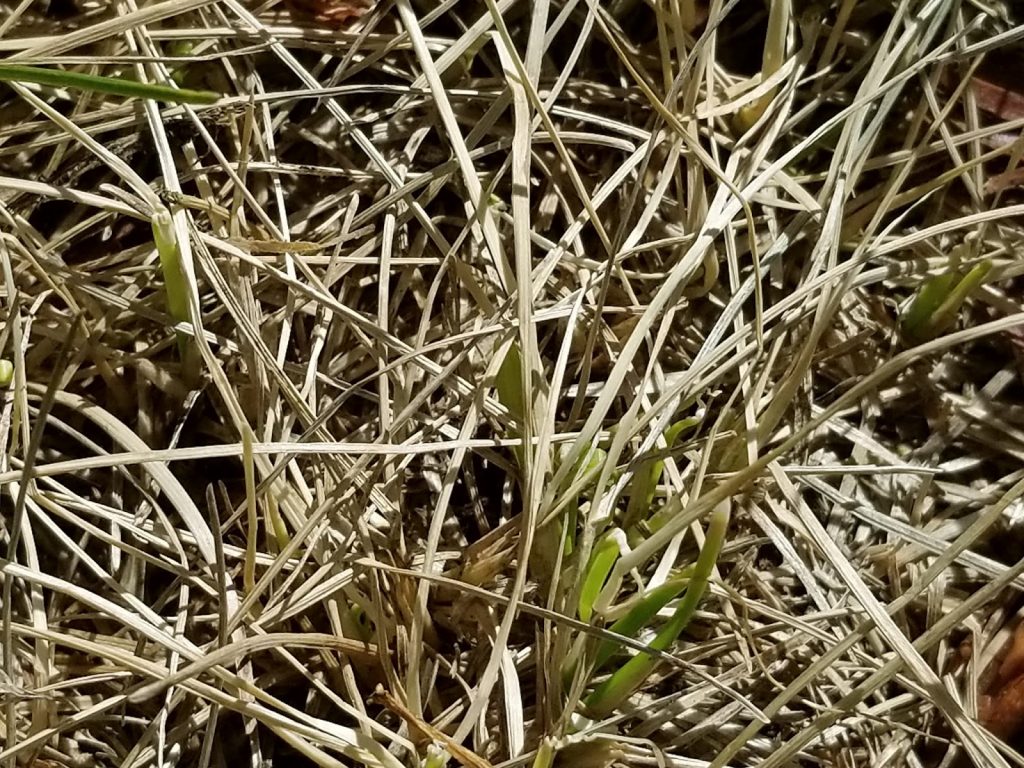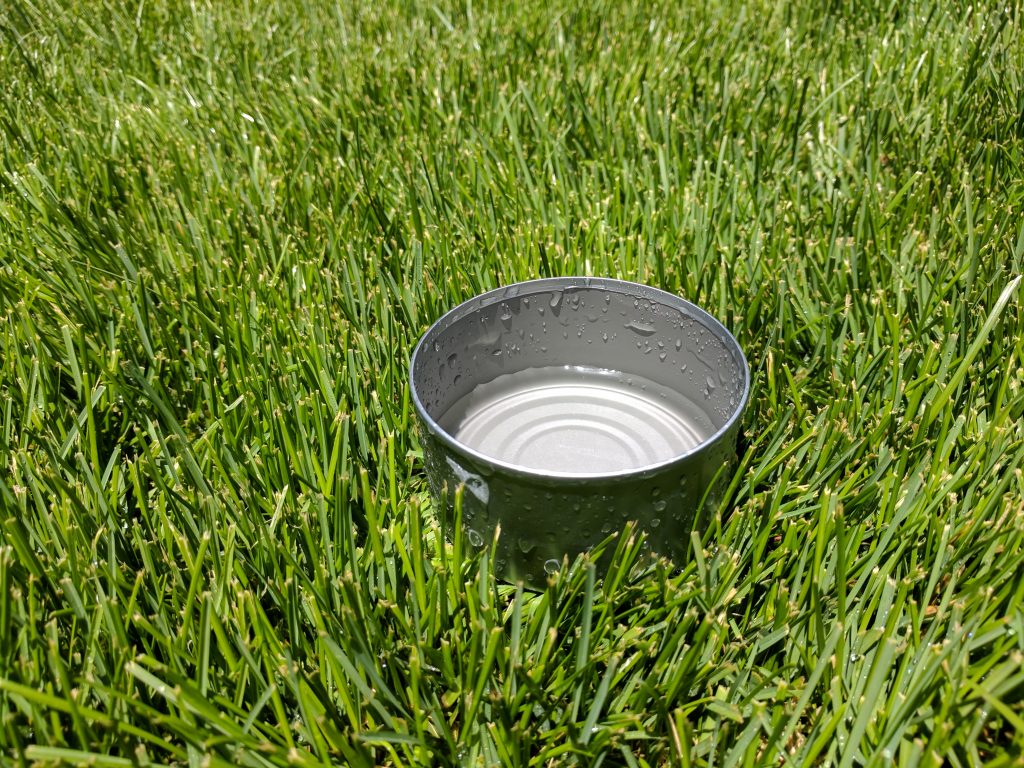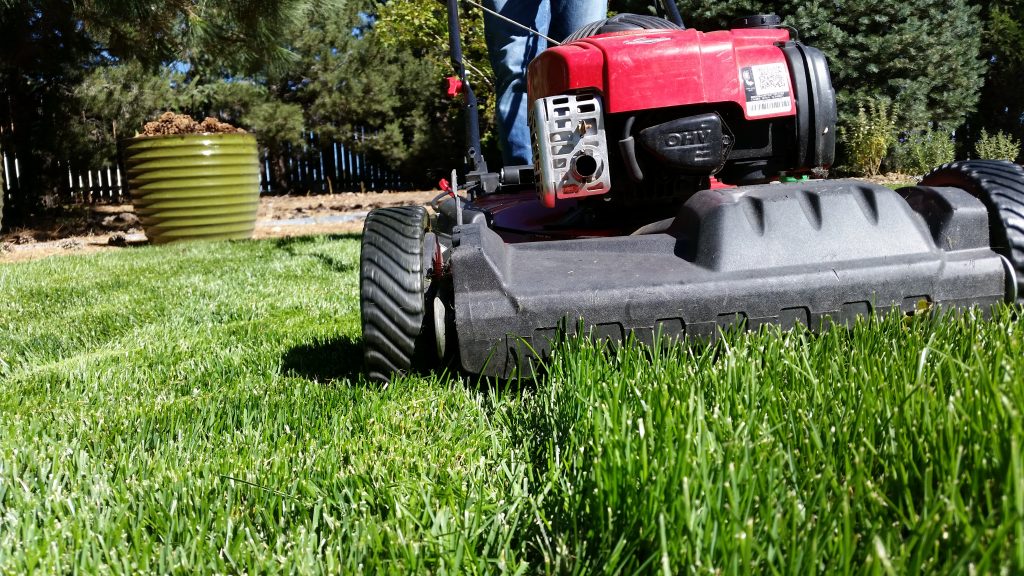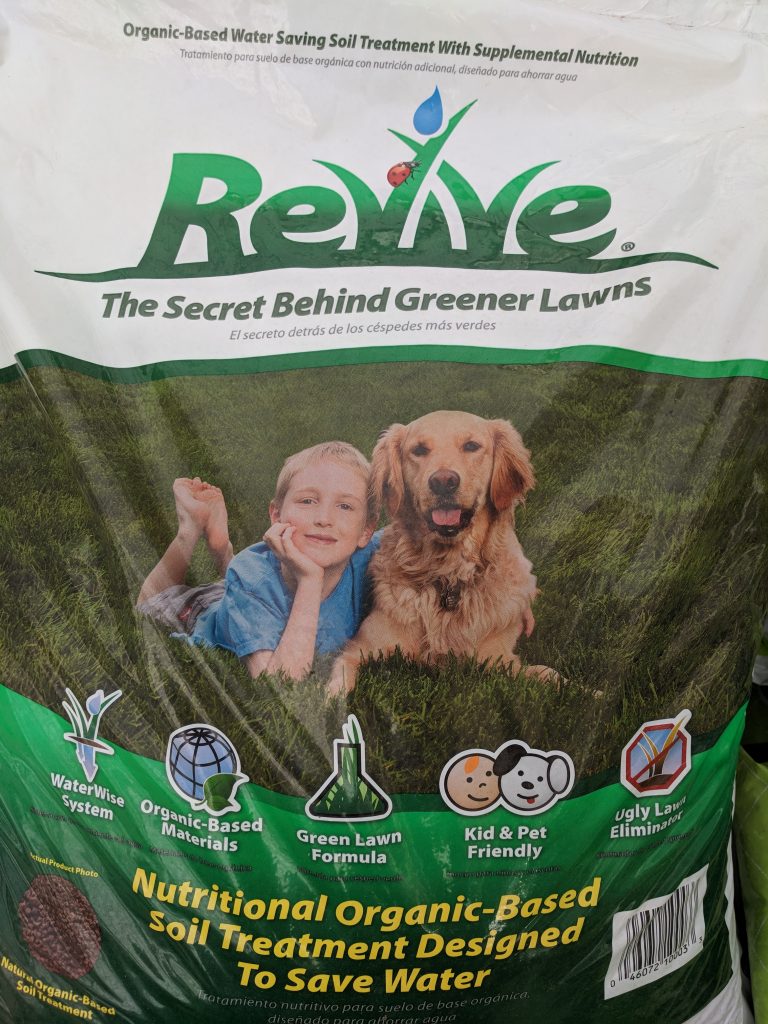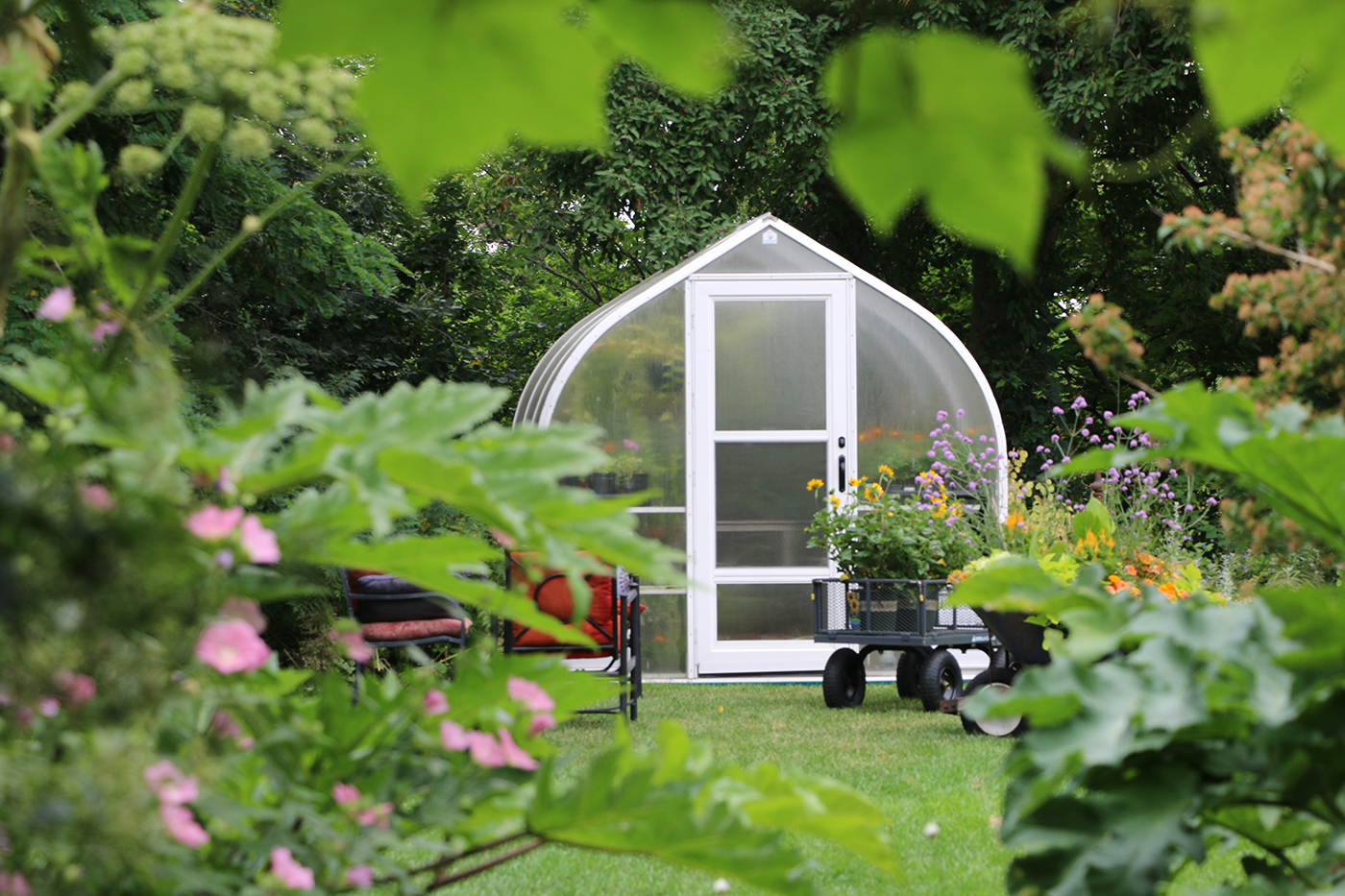Aside from a few types of grubs, most of the problems we see in our lawns are triggered by their environment, the culture, and the care we give them. In short, our lawn’s health is pretty much on us. But take heart! Tagawa Gardens is here to help you understand why the problems began and what to do to help your turf fight back. Here’s the #1 complaint we’ve been seeing at Tagawa Gardens.
And thanks to Dr. Tony Koski, long-time turf specialist at CSU, for providing many of the pictures used here.
Ascochyta leaf blight
It’s a strange-sounding name for a fungus that’s been bringing many people into Dick’s Corner at Tagawa Gardens to ask for help.
Initially, ascochyta can take on a lot of different looks, starting out as splotchy damage, seen here, then growing into large infestations as shown at the top of the blog. Early- to mid-summer is prime time for this disease, and it can often seem to appear overnight! Ascochyta infections are common when a cool, wet spring shifts to a hot, dry summer. Sound familiar?
The ascochyta fungus is always in our soil, but the fungal spores start to run wild when our cool wet spring weather changes to hot, dry conditions, as it did a few weeks ago.
Play detective!
From a distance, several lawn diseases can often appear fairly similar, but with a closer look, ascochyta gives itself away.
That distinctive, straw-colored “pinch” at the top of a blade of grass is hard to miss. Some of the other blades nearby may still be green, while others look like they’ve already given up completely.
Quite often, a lawn mower’s wheels will leave a clear trail of damage when an ascochyta infection is at work.
That’s exactly what happened on my lawn, as seen above. It’s not because the mower is spreading the disease. The weight of the mower simply overwhelms the grass blades that are already struggling to survive, and they go down for the count.
In more severe infections, huge patches of the lawn will completely dry out and appear to be gone for good.
We’ve had guests come to Dick’s Corner at Tagawa’s, and announced that they’re ready to remove their entire lawn and start over because every square inch of turf appears to be dead.
But wait! Your lawn can recover from ascochyta!
Here’s the good news: The ascochyta fungus attacks the leaves of the grass plants… the blades themselves, not the crown of the plant or its roots. With proper care, your lawn can recover!
The following recommendations include the best ways to bring a lawn plagued with ascochyta back to health, but they’re also the very same guidelines that will help lawns avoid ascochyta and many other cultural problems in the first place.
Ascochyta infections begin when turf grass is under severe stress, both drought stress and heat stress. To reclaim an ailing lawn or simply keep a lawn healthy throughout the season, start by taking a very hard look at how you’re watering. Make absolutely sure that whatever method you’re using to irrigate your lawn is delivering enough water, and getting it down evenly and deeply, so none of the grass is being short-changed.
Set out several small, straight-sided cans like cat food or tuna fish cans. Run a “normal” cycle, combine the water you collect, then divide by the number of cans you used. Ex: If five tuna cans collect a total of 1″ of water. One inch divided by 5 means that area is receiving an average of .2″ of water.
Even when the weather’s not this hot, there’s no way that a small amount of water is enough. The water needs to get down to the grass plants’ deepest roots where the soil will stay moist long enough to support the top growth, especially on hot summer days.
Consider “cycle and soak”
This is a technique that a lot of lawn experts recommend. Water each section of lawn very early in the day, perhaps near sunrise, when it’s cool, or late in the day around sunset. Wait an hour or so, then water each section again. You run a cycle, let it soak, then run the cycle again.
Between those cycles, the water will have a chance to soak in and the soil will be able to absorb water even more easily the second time around. The watering becomes more effective, and you get more value for your watering dollar.
CSU recommends putting down enough water to soak in well and avoid needing to water the next day. Of course, any homeowners or businesses that are under watering restrictions need to follow the guidelines laid out for them.
There’s a right way to mow and a wrong way
Even when a lawn is watered properly, mowing when the sun is high and the temperatures are sizzling can add unnecessary heat stress. Stress adds up, in plants and people. It’s kind of like when we travel… we don’t sleep well … we eat food we’re not used to and end up with a nasty cold that we probably wouldn’t have gotten if we’d stayed home.
Try to mow when the day’s temperatures are cooler. And never remove more than one-third of the leaf blade with each mowing. All of that will reduce overall stress on the lawn.
Keeping the grass a good three inches tall helps shade the soil. And try to make sure the mower’s blades are sharp, so the cut edge of each blade of grass is as smooth and clean as possible. Shredded grass tips make it easier for diseases to move in. Replacing or sharpening the blades at least a few times a season would be an excellent investment in your lawn’s health.
Something for spring or fall
We all know Colorado soil can be challenging. If your lawn is already doing its best with our clay soil, give it a helping hand by aerating it in spring or fall … better yet, spring and fall.
Aeration during cool weather opens up the soil so it can absorb more moisture and give grass roots and beneficial organisms a better environment. I’ve aerated twice a season for years and always will.
One more suggestion from Dick’s Corner
Excessive fertilizer can promote a lawn with lush, tender growth… exactly the kind of succulent treat that pests, including diseases, prefer. Dick’s Corner has a free handout called the “Gray Kitty Lawn Care Program” that lays out in detail the best times to fertilize and many other lawn care tips.
While mid-summer isn’t a good time to fertilize, there is one product our Garden Advisors at Dick’s Corner highly recommend, even in the heat of summer.
“Revive” is a surfactant… something that “makes water wetter,” according to their slogan. It can help water penetrate into compacted soils more easily. That’s especially good when you’re trying to fight a disease like ascochyta that thrives when grass roots are constantly thirsty, but it’s also highly recommended for helping to keep healthy lawns be their best during stressful weather. As always, follow the package directions for the best results.
Don’t be a stranger!
Whether you have questions about lawn problems or any gardening and landscape issues, stop by Tagawa Gardens today and talk to our Garden Advisors at Dick’s Corner. They are always ready to help. Bring pictures on your smartphone, preferably both wide shots and close-ups, and feel free to bring tightly-bagged fresh samples, too.
